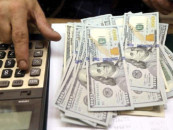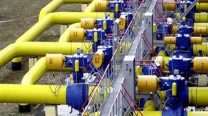Brewing petroleum price controversy
Policymakers must look into possibility of price cut when rates are high

In Pakistan, petrol prices have been increased by Rs6 per lite and diesel prices have been kept almost the same as they were on August 14.
In US dollar terms, the petrol price increase is 14.67% and diesel 11.8%. In rupee terms, the petrol price increase is 7.59% and diesel decreases by 0.21%. This shows the currency effect. There is no GST as per previous period.
In this fortnight, India has reduced its petrol price by 10.98% and Bangladesh by a drastic 38.36% but petrol price in the US has increased by 9.9%.
In diesel, all these countries have reduced prices – Bangladesh by 29.7%, India and Pakistan under 1% and the US by 4.42%.
The high-flyer of South Asia, Bangladesh, which had the distinction of the highest per capita income and economic growth rates, has been under-charging the energy rates – all oil, gas and electricity. As a result, it could increase its exports.
However, energy subsidies have caused a number of problems, which has compelled Bangladesh to knock at the IMF doors.
India has been charging higher prices throughout and has not suffered similarly, although there are slogans of free electricity and LPG for the poor.
Many rich and poor countries are suffering under the high energy prices and low supply. The poor, of course, are suffering more. A balanced pricing and taxation policy, therefore, is required.
Popular expectation was that in view of falling international oil prices and improving exchange rate, petroleum prices would come down in Pakistan. Why have the prices not come down?
Possible official explanation may be as follows: 1. There is PDL (petroleum development levy) increase of Rs10 per litre in keeping with the IMF agreement. PDL has to be increased by Rs10 per litre almost every month until it reaches Rs50; 2. New prices are based on the weighted average prices and exchange rates of the last 15 days. Both the variables have improved in a gradual fashion, hence the 15th day average increase is lower than the improvement done in the recent days, especially in case of exchange rates; 3. People are monitoring crude oil prices, however, it is not necessary that petrol and HSD prices would vary by the same ratio. Although there is a line but that link may asymptote in the longer run and not immediately; 4. Comparisons may only broadly indicate the differences and cannot accurately explain the differences as there are location and other variables that affect prices as well and may not be reflected in the comparator reference prices.
Ironically, there appears to be consensus among the two major parties (PML-N and PTI) on the desirability of price reduction. PDM government, however, has its contractual and revenue limitations. In this situation, a search for price reduction may be welcomed by all the sides.
The government appears to have other options other than playing with PDL and GST, namely customs duty on crude oil and finished products, and income (not collected) from the windfall profit levy (WPL) on local crude oil prices.
WPL collection can be adjusted to reduce prices. A customs duty of Rs17-20 per litre is charged on petrol and diesel. India charged WPL this year on crude prices above $40 per barrel, although in both countries local crude oil does not cater to more than 20% of the requirements.
There are transfer price issues as well as higher prices reflect into the PLS of public sector oil companies and yield corporate taxes.
On the rationale of customs duty on crude oil and finished products, there is some sort of confusion and controversy. Customs duty on crude oil (not known if it is actually collected or is a price preference mechanism) is charged in the prices of refineries and customs duty is charged on finished products to PSO.
PSO should be paying more duties? It is also explained by the insiders that customs duty on refineries’ crude oil imports are an equalizer to the higher import prices of PSO?
There are proposals for S-curve under the cost-plus regime wherein there is price ceiling and floor pricing provision.
Simply speaking, product prices may not cross over an upper limit which may hurt the consumer and the economy and the prices may not be allowed to go below the assigned lowest level, which may hurt the producer.
PSO is the price leader controlling more than 50% of the market. Improvement in PSO’s efficiency can improve the whole sector. Allegedly, excessive premium over reference prices are charged.
PSO engages in international tenders in a transparent process. However, there are allegations of cartels formed by international supplier companies.
Reportedly, there have been PPRA rules which bar innovation in procurement. These rules do not allow negotiations. It is the price negotiation, which helps break the cartel.
Help of international advisers have to be sought for advice in negotiations. It is not enough to open tender envelopes. If you can’t win them, join them.
Joint ventures with international suppliers may be helpful, especially with China which has been benefiting from cheaper oil from Russia and Iran.
On the other hand, there have been talk of deregulating the oil sector and it continues to be going on despite having observed the catastrophe the market manipulation of suppliers and supplier countries have been causing.
Why should a producer produce more to earn profit when he can do so by limiting production and charging more? US President Joe Biden has been lamenting this aspect of the market. We will take this up in a later opportunity.
There are conflicting views on the oil regime prevailing in the country. The issue is complicated by the lack of transparency in releasing price information. Partial and dispersed data is available only, hence deeper analysis may not be possible.
It is advisable that policymakers undertake a deeper analysis and look into the opportunities for price reduction, especially when prices are high and causing political and social problems. It is no use earning revenue and losing it in lower exports and fall in exchange rates.
The writer is former member energy of the Planning Commission and author of several books on the energy sector
Published in The Express Tribune, August 22nd, 2022.
Like Business on Facebook, follow @TribuneBiz on Twitter to stay informed and join in the conversation.



















COMMENTS
Comments are moderated and generally will be posted if they are on-topic and not abusive.
For more information, please see our Comments FAQ